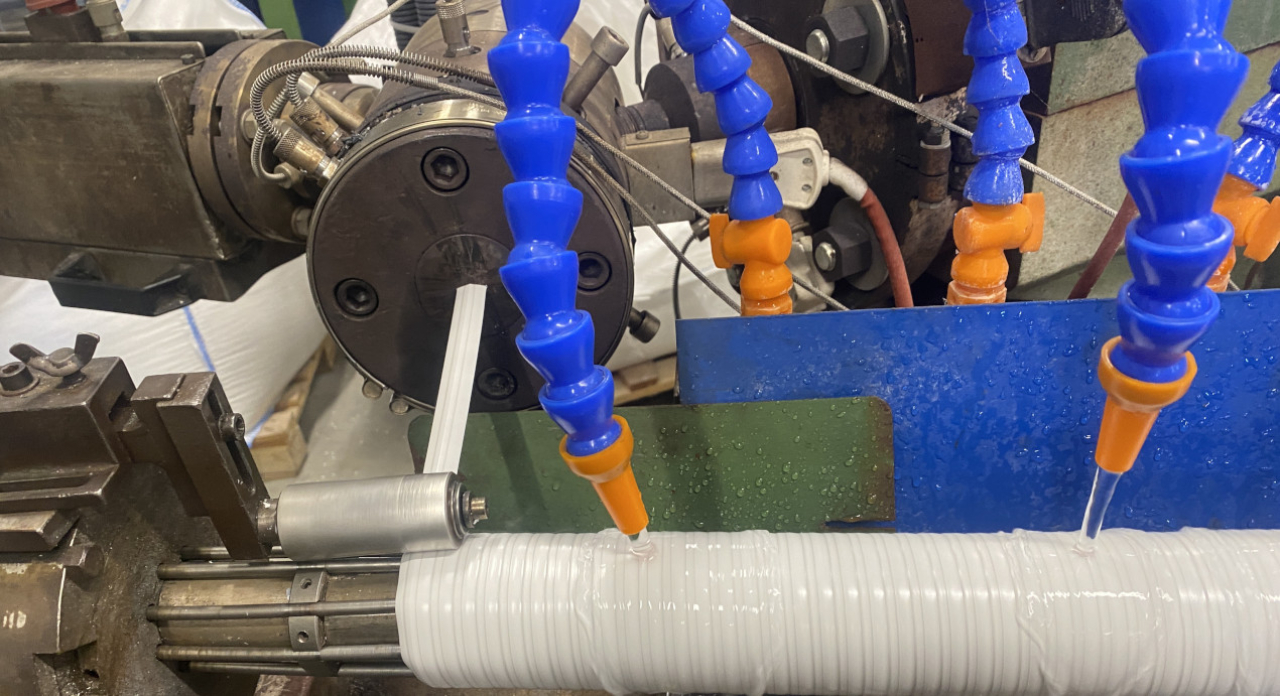Understanding the Basics of CNC Technology
If you're delving into the world of modern manufacturing, it's essential to grasp the fundamentals of computer numerical control (CNC). With CNC being a cornerstone in industries requiring precision, it's more than just a buzzword; it's a transformative tech that leverages sophisticated software to bring your digital designs to life. As you embark on understanding this key component, you'll delve into the precise and intricate world of CNC routing and CNC parts manufacturing.
The journey from concept to physical piece begins with your design in a computer-aided design (CAD) program. CNC technology that MegaPlot machines are using, takes over by translating these designs into a language of numbers and coordinates, which CNC machines interpret to execute precise movements. The result? Sharp, accurate, and repeatable cuts that form the backbone of countless projects across various industries.
- The innovation in CNC routing allows the creation of detailed patterns and shapes, which are essential in woodworking, signage, and prototyping.
- The efficiency of CNC parts manufacturing ensures components are produced with the highest accuracy, vital for the automotive and aerospace sectors.
Below is a comparison of traditional manufacturing techniques with CNC technology to highlight the transformative impact on production efficiency and accuracy:
|
Manufacturing Technique |
Level of Precision |
Production Rate |
Capability to Produce Complex Shapes |
|
Traditional Manual Machining |
Moderate - High (skill-dependent) |
Lower |
Limited |
|
CNC Machining |
Very High (automation-driven) |
Higher |
Extensive |
Embracing the power of computer numerical control means elevating your production capability and ensuring each piece is crafted with supreme precision. Whether you're operating on a small scale or within a vast industrial landscape, the principles of CNC technology remain the same, opening a world of possibilities for your projects that demand exactness and intricacy.
The Importance of Precision in CNC Machining
When you delve into the world of CNC milling and CNC turning, you'll quickly find that precision isn't just a goal—it's an essential component of the manufacturing process. In the fabrication of components that are intended to fit into larger systems, precision is what ensures a seamless integration. This is particularly true for industries where the margin for error is virtually zero, like aerospace and medical devices. In these fields, a micro-measurement off can lead to critical failures. But how does this look in real terms, and why should precision be at the forefront of your considerations when it comes to precision parts manufacturing? Let's break it down.
In CNC machining, every detail matters. Tolerances and specifications are followed with extreme care, ensuring that parts can be reproduced with exact similarities time and time again. High-quality CNC machines have the capability to produce parts with intricate geometries and fine details, which is essential for achieving the level of precision required for advanced applications.
- Tolerances: Determining how close the dimensions of a physical part can come to the theoretical design.
- Repeatable Accuracy: The ability of CNC machinery to produce the same part to the same specifications over multiple iterations.
Consider the application of CNC technology in the production of a custom-designed component for a high-stakes industry. With the precise capabilities of contemporary CNC machines, your part will be cut, carved, or shaped to meet the exact specifications required, guaranteeing functionality and compatibility.
|
Machine Process |
Importance for Precision |
Industry Application |
|
CNC Milling |
Creates complex 3D shapes with precision, necessary for custom molds and prototypes. |
Aerospace, Automotive, Manufacturing |
|
CNC Turning |
Produces high-precision cylindrical parts crucial for mechanical systems. |
Medical Devices, Robotics, Defense |
|
Multi-Axis Machining |
Allows for complicated movements and angles, enhancing the precision of multi-faceted parts. |
Telecommunications, Electronics, Scientific Research |
By emphasizing the importance of precision in CNC machining, you're not only committing to superior quality control but also to the craftsmanship that reinforces reliability in your production line. In a marketplace that continuously demands perfection, equipping your operations with the right CNC milling and turning capabilities is key to maintaining a competitive edge. Remember, the future of manufacturing leans heavily on the minute subtleties and the flawless replication only possible with high-caliber CNC machining.
How CNC Machines Transform Parts Manufacturing
Imagine a world where complex parts manufacturing processes are streamlined, creating a seamless flow from design to production. That world is here, and it’s driven by CNC machining centers. These powerhouses bring your ideas to life, turning raw materials into precision components that fit flawlessly into everything from everyday gadgets to advanced aerospace technology.
With automated machining, you're not just investing in a machine; you’re investing in a future-proof approach to manufacturing. Say goodbye to the manual limitations that once bound your creativity and held back production speeds. CNC technology ushers in a new era of efficiency, where high-speed spindles and multi-axis capabilities mean intricate parts are crafted faster and more accurately than ever before.
- Increased Precision: High-precision manufacturing is non-negotiable in the world of CNC. With minimal tolerances, CNC parts fit perfectly into their designated role within complex assemblies.
- Enhanced Speed: Time is of the essence, and CNC machining centers are designed to meet demanding production schedules, ensuring your projects are completed in a fraction of the time.
- Error Reduction: Human error can be costly, but automated machining provides a level of consistency that manual processes simply can’t match.
- Versatility in Production: No matter the complexity of the part, CNC machining centers handle it all, from simple cuts to complex three-dimensional shapes.
Embracing CNC parts manufacturing isn't just about staying current; it's about staying ahead. When you harness the capabilities of CNC machinery, you open doors to innovative production techniques that keep you at the forefront of your industry. So, take the step and join the ranks of manufacturers who have already realized the transformative power of CNC machining.
Key Features to Look for in CNC Machining Centers
When it comes to upgrading your workshop with a CNC machining center, it's crucial to zero in on features that promise to elevate the efficiency and accuracy of your production. A feature indispensable to modern precision machining is the high-speed tool change capability. This function is essential for maintaining tight production schedules while ensuring the machine transitions smoothly between different phases of production without sacrificing precision. Additionally, the inclusion of advanced cooling systems mitigates the thermal distortion that can occur during lengthy machining operations, thereby preserving the integrity of each component produced.
Another cornerstone of a high-level CNC router is its ability to execute multi-axis movements. This versatility provides you with the capability to craft intricate cuts and detailed engravings with relative ease, operations that are far beyond the reach of conventional equipment. Precision machining thrives on such flexibility, as it expands the range of possible designs and shapes that can be produced, opening up new avenues for innovation in part manufacturing.
Lastly, the backbone of an efficient CNC machining center is robust software that simplifies the programming process. Software that allows you to simulate machining processes becomes a game-changer, offering a glimpse into the final product before a single cut is made and guaranteeing that your resources are utilized effectively. By taking the time to understand and prioritize these key features, you're placing yourself in an advantageous position to secure a machining center that meets your high standards for precision and productivity.






